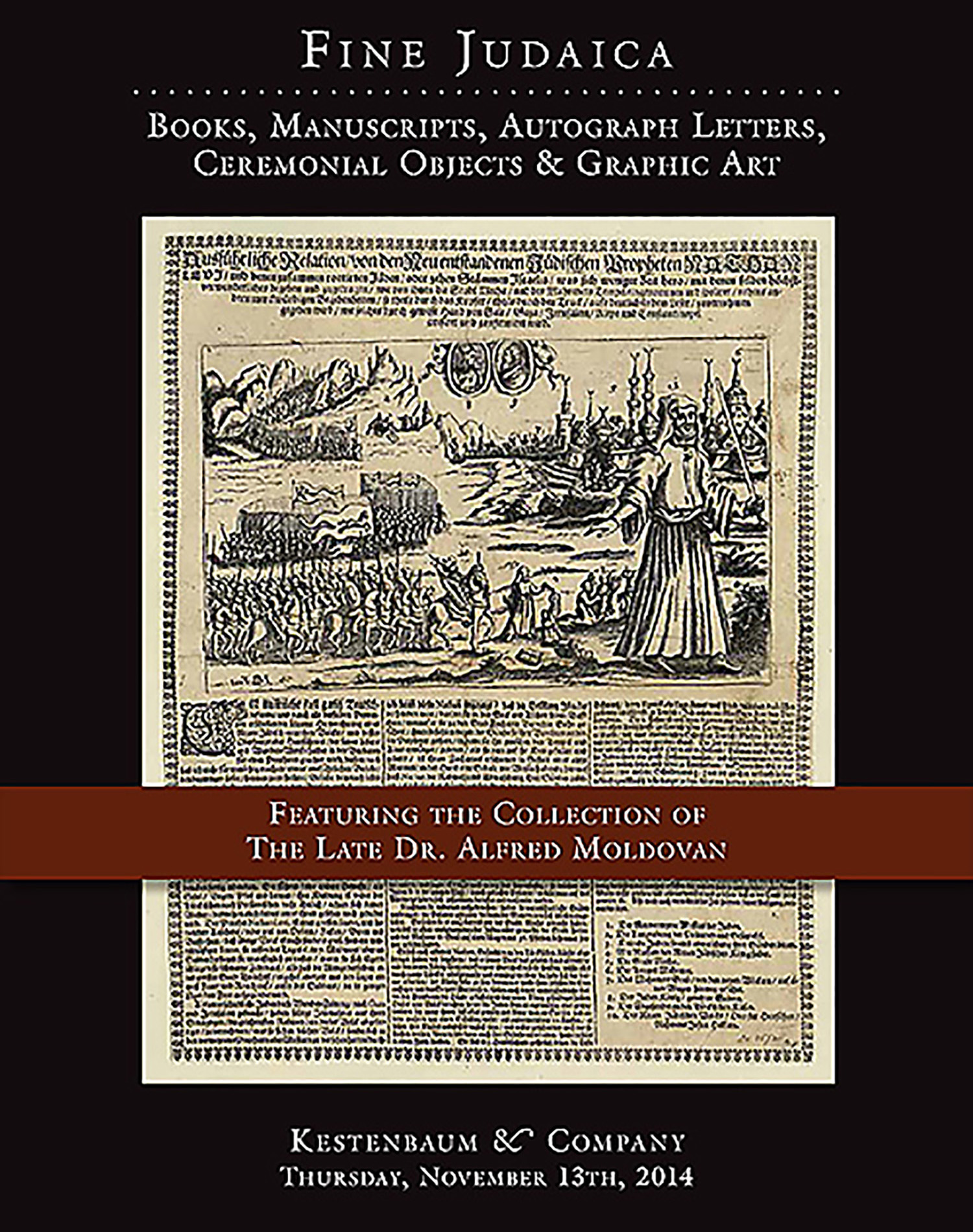Ilan.

AUCTION 63 |
Thursday, November 13th,
2014 at 1:00
Fine Judaica: Books, Manuscripts, Autograph Letters, Graphic and Ceremonial Art
Lot 296
(KABBALAH).
Ilan.
Sydney, Australia: 10th Iyar 1928
Est: $3,000 - $5,000
PRICE REALIZED $6,500
<<A Kabbalistic manuscript from Australia.>>
Beautifully composed, incorporating numerous Kabbalistic devices, concentric circles, charts and other displays with commentary throughout. A lengthy colophon appears on f. 4 in which the scribe Yehudah bar Abraham Getzel Falk (a.k.a. Leib Aisack Falk) sketches his personal background (see below). He states he came across an old Kabbalistic manuscript and decided to copy this great treasure so that it would not be lost for future generations. He hopes that both the original and his copy would find a home among religious upstanding individuals.
<<THE text:>>
Over the ages attempts were made by various Kabbalists to render into diagram-form the teachings of the Kabbalah concerning the structure of the spiritual universe. Known as the Ilan Hagadol (“great tree”) or Ilan Hakadosh (“holy tree”) or simply as the Ilan, this arrangement would give the student of esoteric lore a clearer picture of the exact layout of this highly complex universe.
Our Ilan represents the order of the Lurianic cosmogony. The revelations of Rabbi Isaac Luria (Egypt and Eretz Israel, sixteenth century) revolutionized the world of Kabbalah, introducing a complexity hitherto unknown. The most famous graphic representation of Lurianic doctrine is that ascribed to R. Meir Hakohen Poppers (d. 1662), final editor of the Lurianic writings, published in Warsaw in 1864 as the Ilan Hagadol. However, Gershom Scholem has cast serious aspersions on the presumed authorship, as the Ilan Hagadol begins with a segment portraying the “Olam HaMalbush” (World of the Garment) which derives from the teaching of R. Israel Sarug and represents a radical departure from the Lurianic tradition received by R. Chaim Vital, of which Poppers is a faithful adherent.
The present Ilan also refers to the Olam HaMalbush on f. 3. The Olam HaMalbush is made up of various combinations of letters of the Hebrew alphabet which form the archistructure of divine thought. The various names of the Tetragrammaton constitute the “fold,” “threads” and “weave” of the garment.
The Manfred R. Lehmann Library possesses a similar Aschkenazic kabbalistic Ilan where the “flow chart” is arranged predominantly as concentric circles. See Moshe Hallamish, Ohel Hayim, Vol. I [Kabbalistic Manuscripts] (New York, 1988), K 85 (p. 181). See also the following page of the Lehmann catalogue, K 86 (pp. 182-3), of eighteenth-century North African provenance. However, our manuscript has far more detail than the manuscripts described in the Lehman catalogue.
Several authors have penned commentaries on the Ilan, including R. Aryeh Leib Lipkin, nephew of the famed R. Israel Salanter, founder of the modern Mussar movement. See further Meir Benayahu, Kabbalistic Writings of R. Moshe Hayyim Luzzatto (Jerusalem, 1979), pp. 59, n. 30; R. Chaim Friedlander, Sha’arei RaMCHaL (Bnei Berak, 1989), pp. 257-292. See also EJ, Vol. XIII, col. 866 and Vol. XIV col. 1105.
<<The Scribe:>>
Recorded in The Australian Dictionary of Biography, Volume 8, (1981) as Leib Aisack Falk (1889-1957). Born in Boisk (Bauska, Latvia) he studied in various Lithuanian yeshivoth including Kovno and Telz; one of his early teachers was Rabbi Kook, later chief rabbi of Jerusalem. In 1911 Falk moved to Scotland and was minister in Dundee. After serving from 1915 in Plymouth, England, he was chaplain in 1918-21 to the 38th-40th Royal Fusiliers (First Judeans) in Egypt and Palestine. In 1922 he was inducted as second reader at the Great Synagogue, Sydney. Inspired by his experiences in Palestine Falk was an ardent, militant Zionist and enjoyed a close friendship with Vladimir Jabotinsky. At the same time he was an admirer of Britain and, until 1948, hoped that Palestine would become a dominion. Falk was an ardent scholar and built up a fine library.
